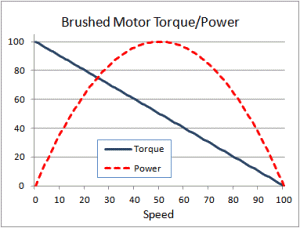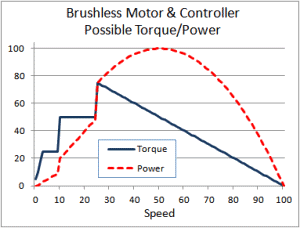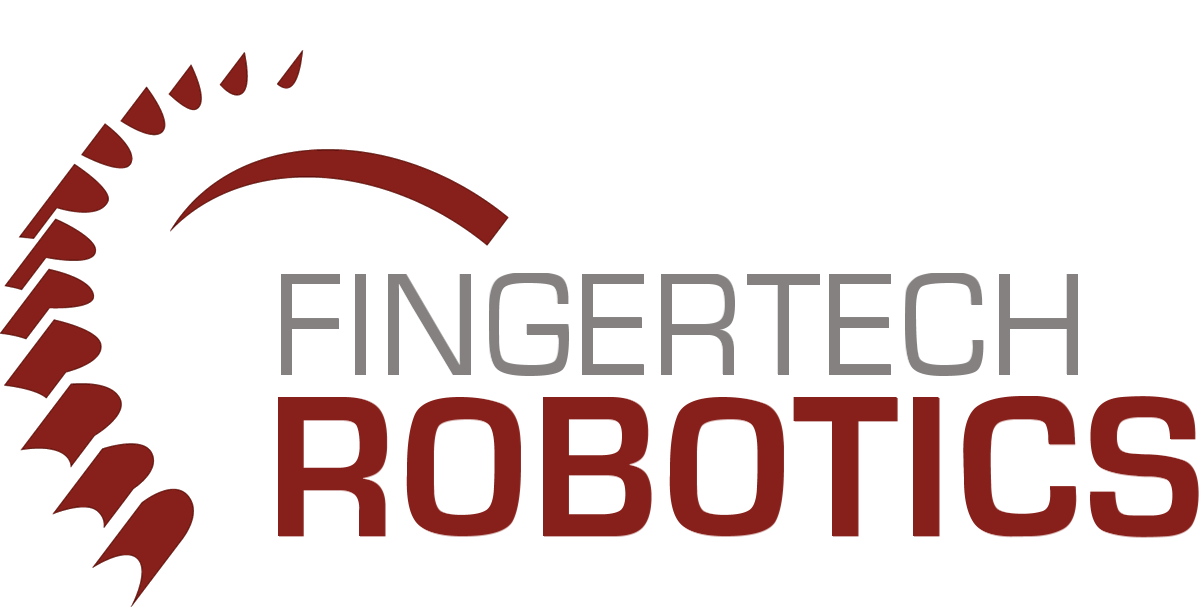Notes on Brushless Motor Torque
We had a good conversation with Mark Joerger from Ask Aaron - Combat Robot Q&A about what it means when you ask "What is the stall torque of this brushless motor?" Mark has answered more questions about combat robotics on his website than anyone else on the planet, so who better to help us understand the intricacies!
So... What IS the stall torque of this brushless motor?? And how does it compare to a brushed motor?
Mark: Calculating the performance of brushed motors in a drive train is relatively easy because they have simple mechanical commutation and require only 'dumb' speed controllers that just dump current to them. The torque-power curve of a brushed motor looks like this:

Maximum torque and current both occur at stall (zero RPM) and have a nice linear decrease with increasing speed. Simple.
The torque-power curve for small hobby brushless motors are more complex. Brushless motors require 'smart' motor controllers to operate and the torque curve depends as much on the controller and its firmware settings as it does on the motor itself. Controllers for brushless motors apply current in multiple stages as the motor starts and rises in speed. A typical torque-power curve for a brushless motor MIGHT look something like this:

You can see that a brushless motor produces very little torque at or near stall, with peak torque delayed until the motor reaches about 25% of full speed. That makes ‘stall torque’ and ‘stall current’ largely useless for measuring brushless motor performance, which explains why they do not appear in brushless motor spec sheets.
Attempting to use drivetrain equations for brushed motors to evaluate brushless motors by plugging in torque figures derived from available brushless specs like speed constant ‘Kt’ and internal resistance ‘Ri’ will greatly overestimate their performance.
Key Points:
1) Low speed torque and peak current for a brushless motor will vary with the specific motor controller used, the controller's firmware, and settings applied to user firmware options. They are not inherent to the motor alone.
2) Calculating 'maximum current' is effectively unworkable because of the 'black box' nature of the controller firmware -- but you can directly measure current consumption of a specific drivetrain with an ammeter. Alternately, you can base your selection of speed controller and battery current capacity on components used by successful robots using motors and designs similar to yours.
3) Once you measure 'maximum current' for a specific brushless motor/controller pairing you can calculate 'maximum torque' by multiplying the torque constant for the motor (Kt) by the max current. If your motor does not have a Kt in the specs you can estimate: Kt in inch-ounce units: = 1352 / Kv
4) Unfortunately, having max torque and current does not offer a direct comparison to brushed motors because all the time the brushless controller takes fiddling around with low-speed current damps down the overall performance of the brushless motor system. Hobby brushless motors are made to spin propellers for model aircraft and our application of them to robot weapons and drivetrains puts them in an adverse environment.
Take a look at this Ask Aaron post for a more complete discussion on the topic: http://runamok.tech/AskAaron/motors.html#nobrush
So, how does a builder choose a suitable brushless motor for drive or weapon? See: http://runamok.tech/AskAaron/brushless_size.html
Thanks Mark!
- All Categories
- Batteries & Chargers
- Bearings
- Building Materials
- Connectors & Switches
- Electronics
- Merchandise
- Gift Certificates
- Kits & Parts
- Motors & Mounts
- Pulleys & Belts
- Radio Equipment
- Servos & Mounts
- Tools & Fasteners
- Weapon Systems
- Wheels & Hubs
- Clearance
| 0 Product(s) in cart |
| Total 0.00 CAD |
| » Checkout |
 Login Status
Login Status
|
|
Not logged in |
| » Login |


